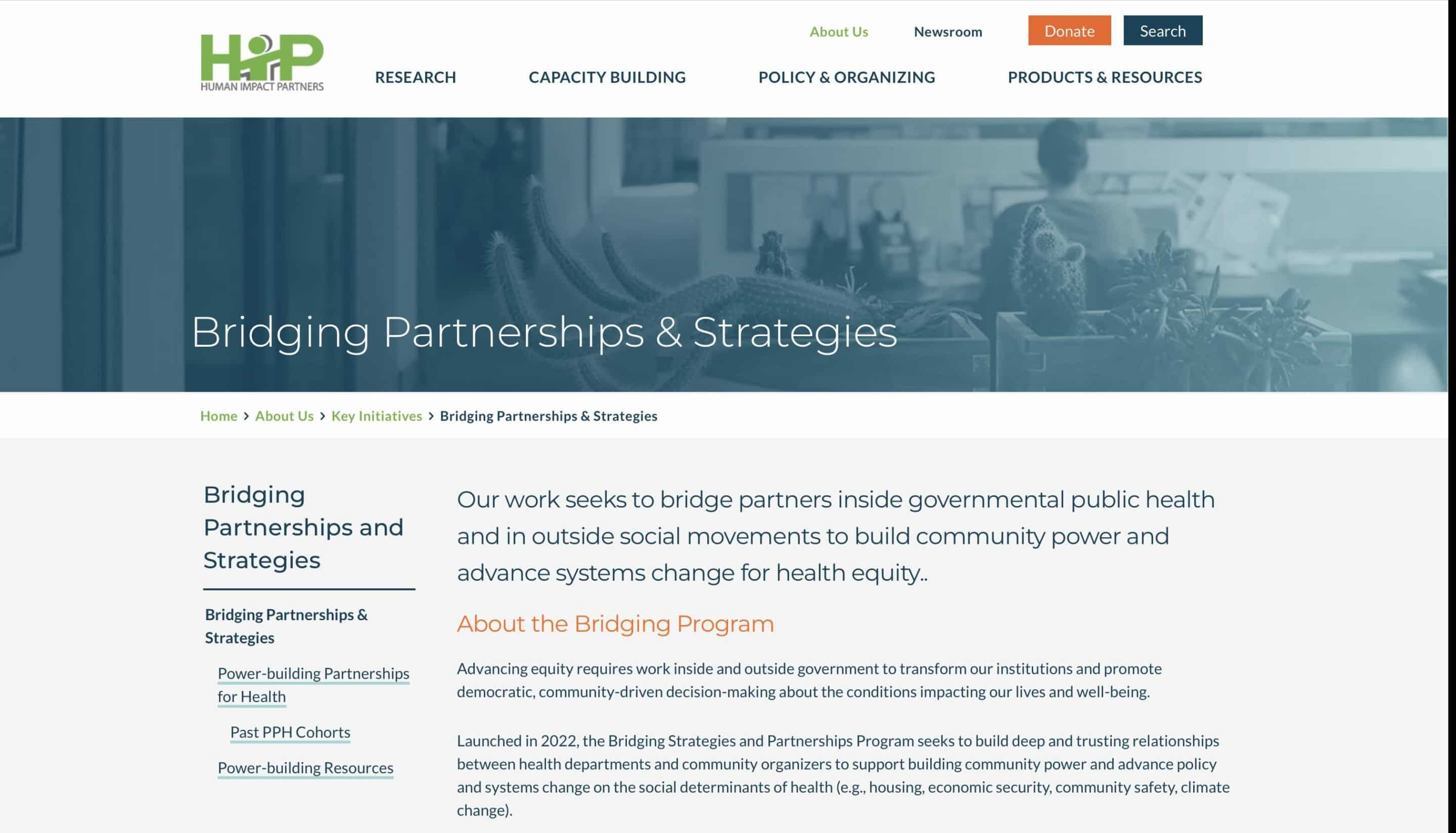
This resource focuses on building deep partnerships between government public health departments and community organizers to advance health equity, community po...
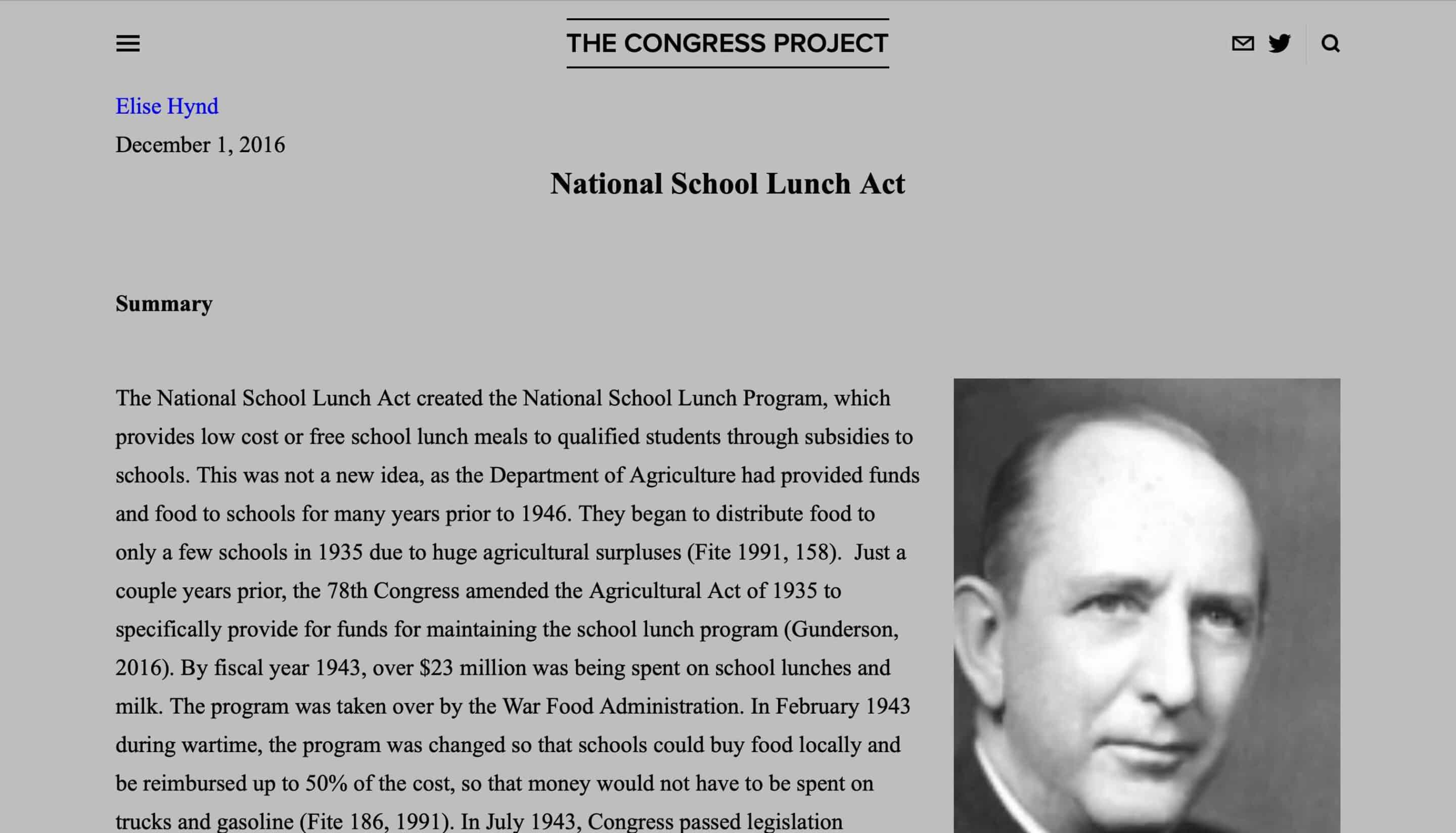
This resource provides a legislative history and analysis of the National School Lunch Act of 1946. It examines its development, debates, amendments, and impact...
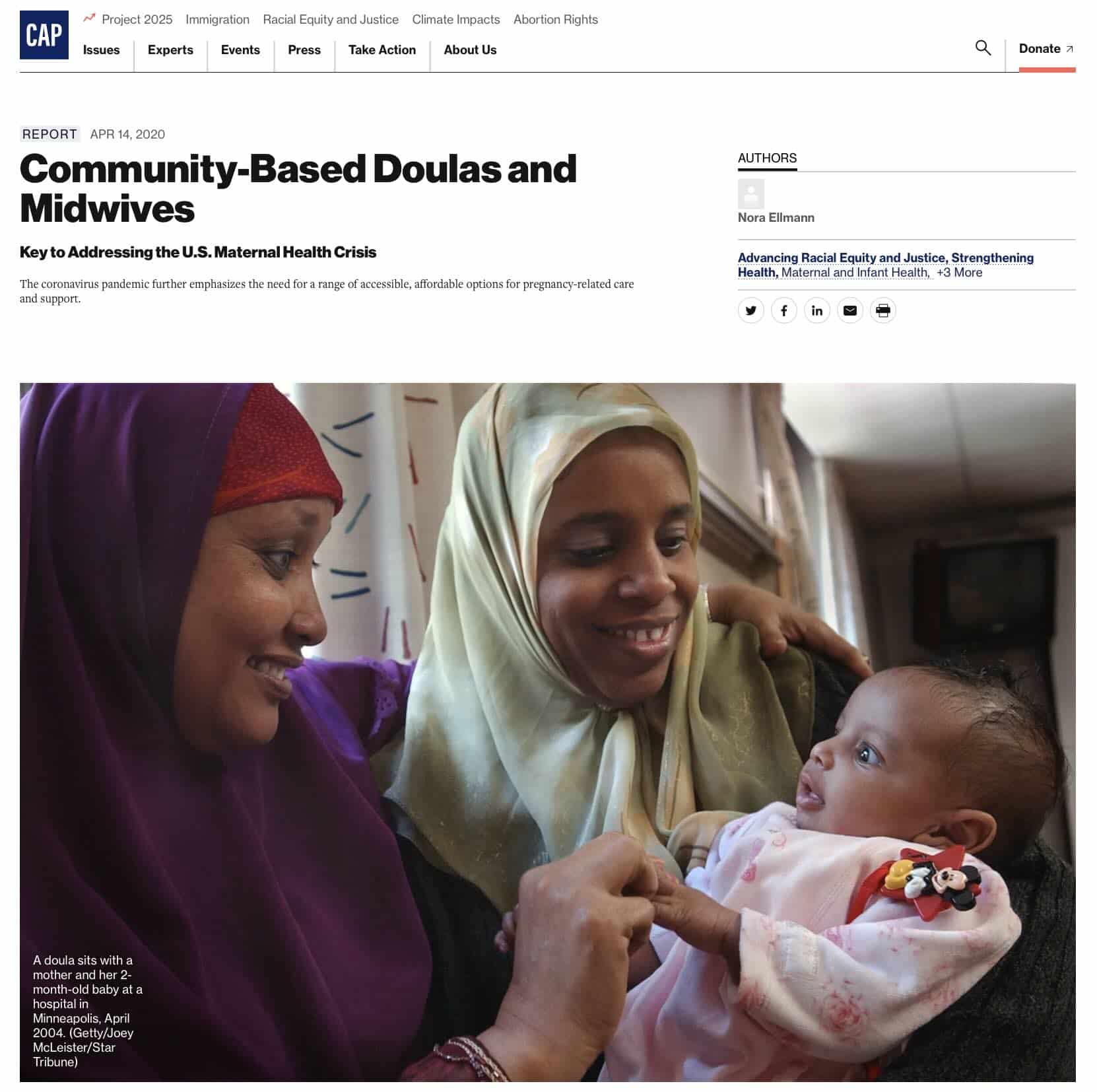
This resource highlights the critical role of community-based doulas and midwives.
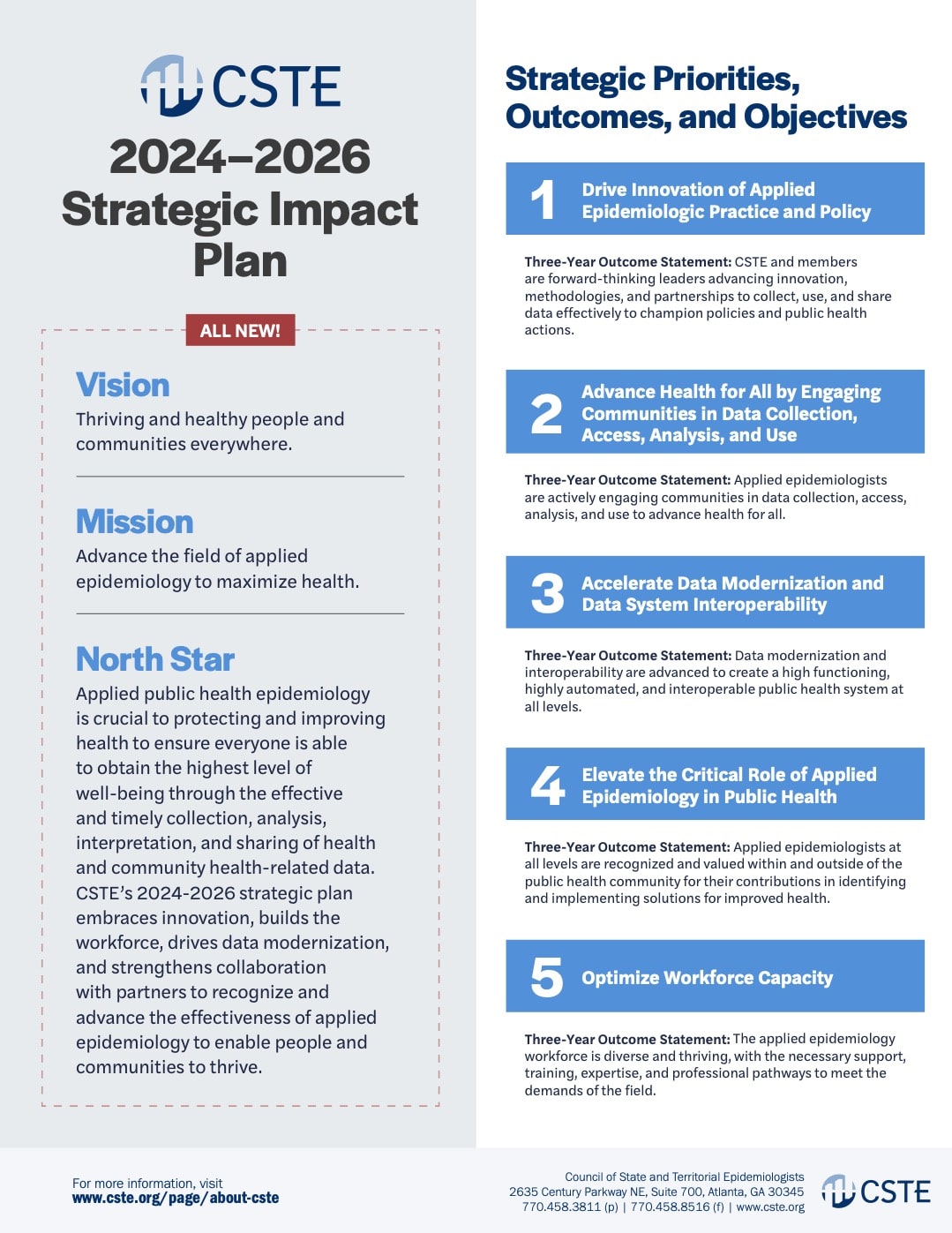
This resource outlines CSTE’s 2024-2026 Strategic Impact Plan, focusing on advancing applied epidemiology to promote public health through innovation, workfor...

This resource provides technical assistance, training, and resources for OT21-2103 grant recipients as part of the National Initiative to Address COVID-19 Healt...
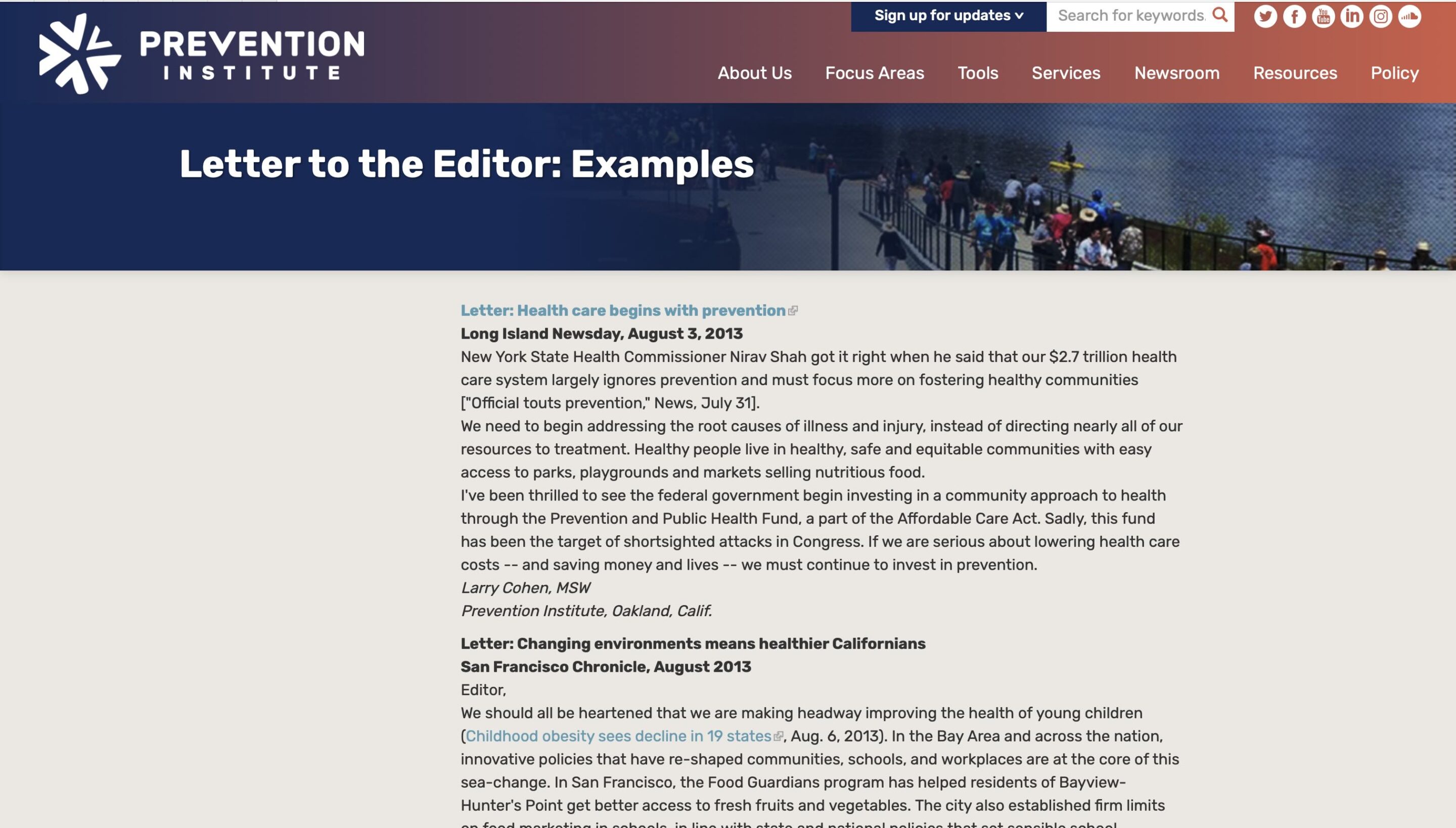
This resource provides examples of letters to the editor that emphasize the importance of prevention in healthcare and community health initiatives.

This resource is a template for writing letters to the editor. It guides users on how to structure their letters to communicate their position on an issue effec...
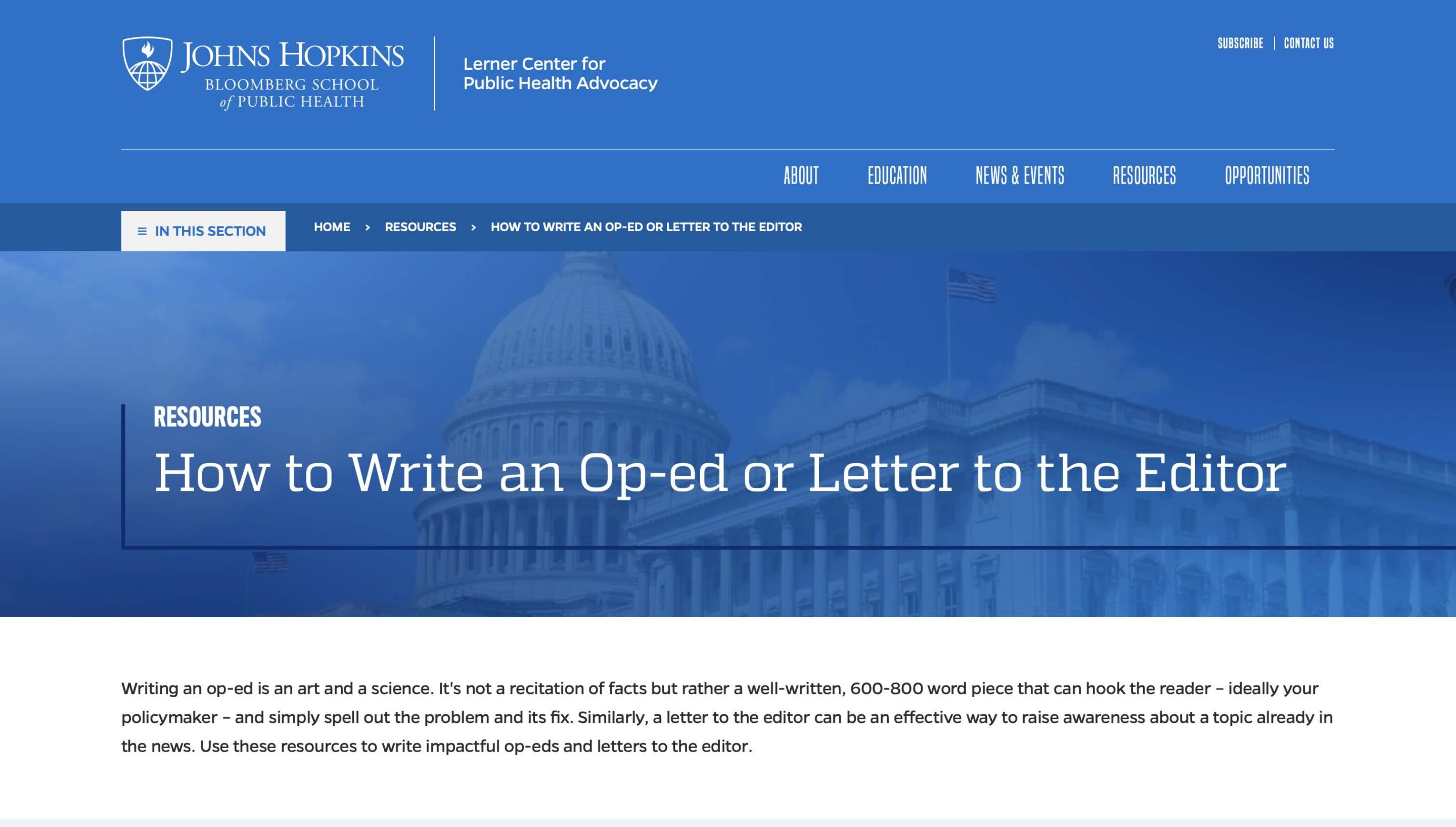
This resource guides writing effective op-eds and letters to the editor to raise awareness and influence policymakers on public health issues. It offers tips on...
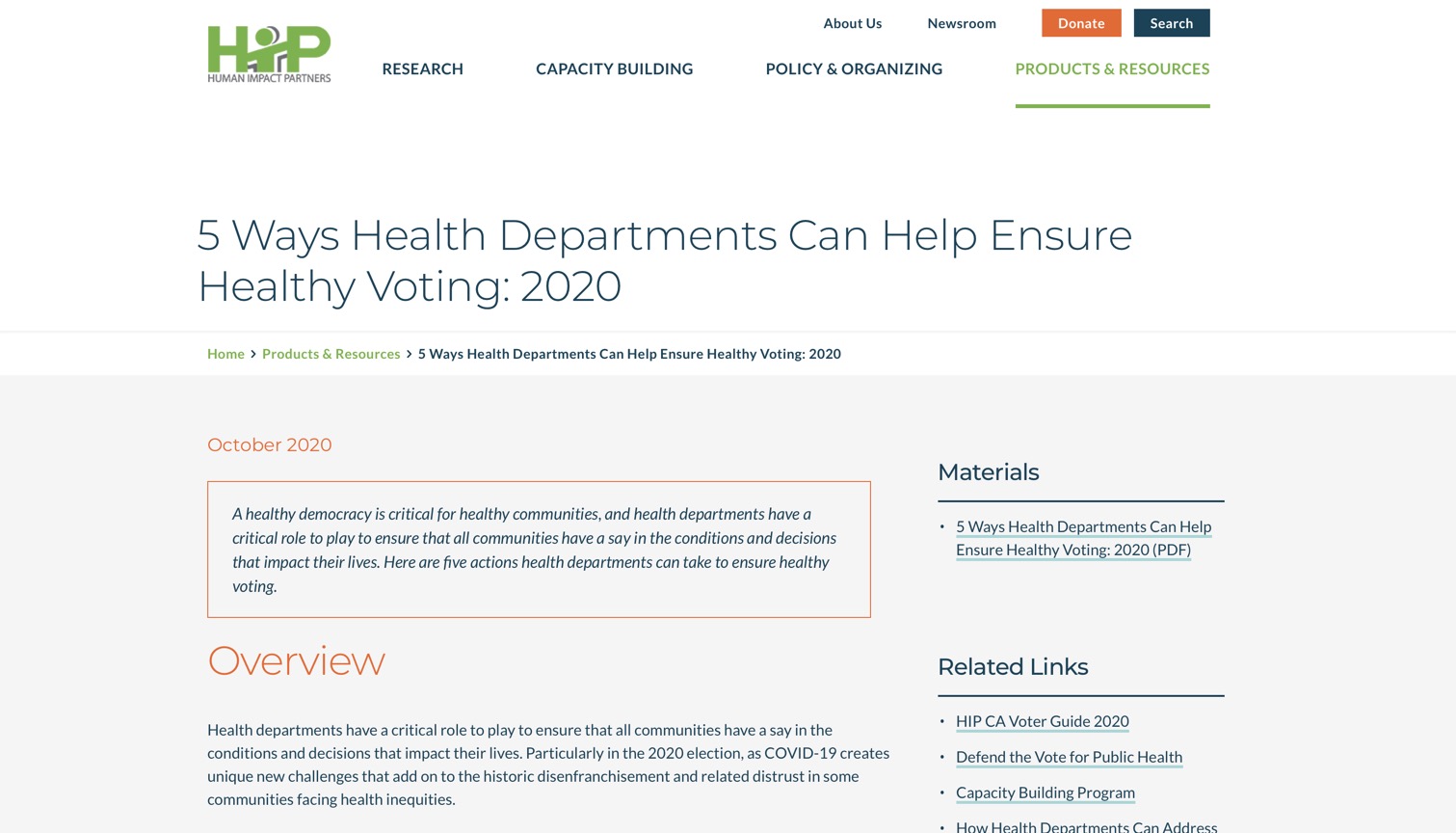
This resource emphasizes the role of health departments in promoting healthy voting practices, particularly during the 2020 election and amid challenges like vo...
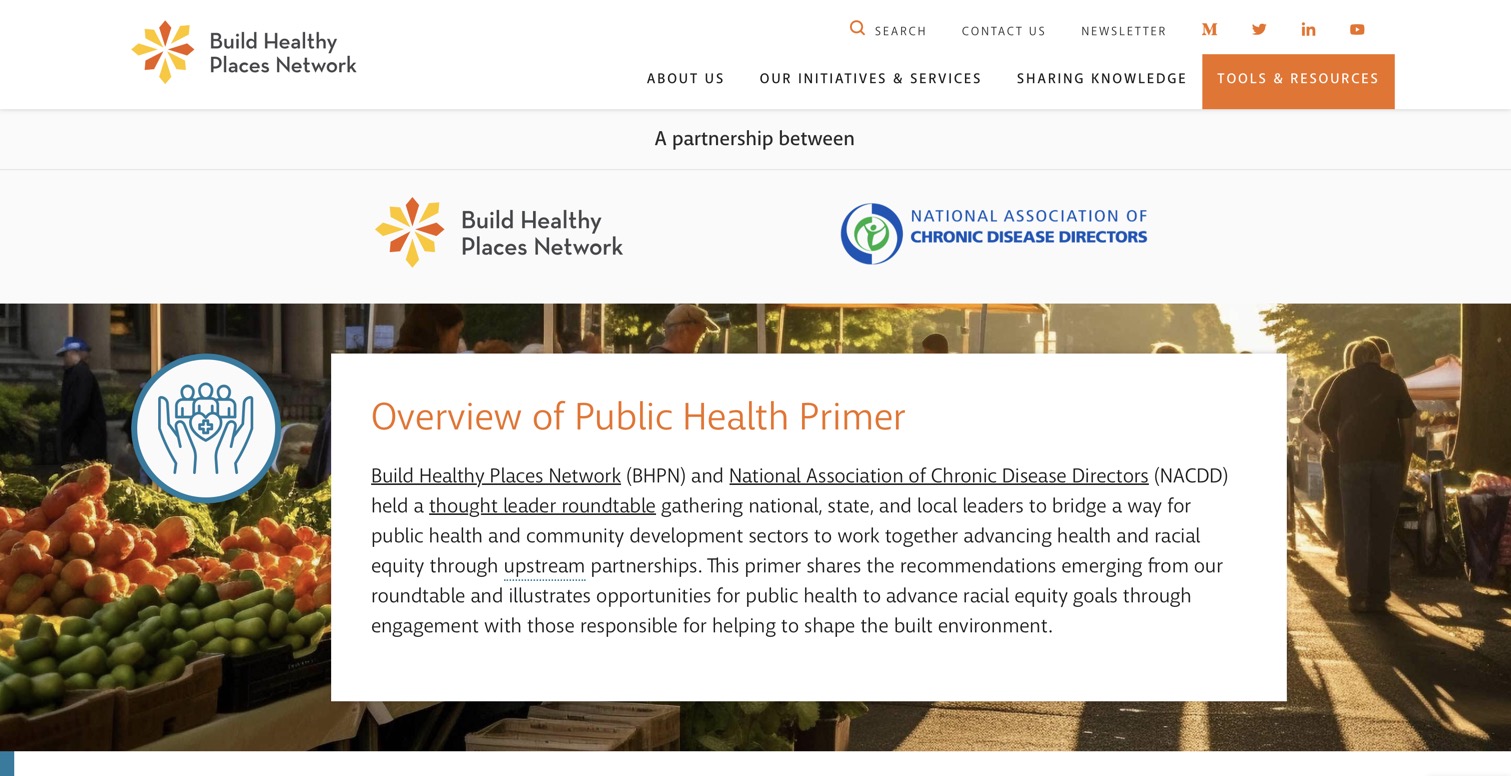
This resource discusses the collaboration between public health and community development sectors to address health and racial equity through upstream partnersh...

This resource provides information and resources to encourage people to take actions that can help prevent the spread of COVID-19. The initiative emphasizes the...

This set of resources and tools is specifically tailored to increase vaccine uptake and address the main barriers that Hispanic people face in the current healt...

This webpage details the Healthiest Cities and Counties Challenge (HCCC), in which 20 project teams in communities across the nation are awarded grants to ...

This training aims to support bilingual and multilingual community members in reducing health information barriers by sharing vital health information with peop...

This set of ten interactive case studies aims to bring recommendations from Public Health Forward: Modernizing the U.S. Public Health System to implementat...

This website summarizes Project REFOCUS, a project that provides a real-time crisis monitoring system and educational resources for public health practitioners....

This report examines the $120 billion spent by the federal government on public health measures including the development and distribution of vaccines and if th...

This article explores how centering communities helped overcome mistrust and barriers to accessing COVID-19 vaccines and looks at lessons learned for building a...

The fourth in the CDC Foundation’s Lights, Camera, Action: The Future of Public Health series, this summit brought together nearly 1,500 participants that...

This report aims to provide a framework focusing on protecting and promoting the well-being of the nation’s big cities by building healthier, more equitab...

This webpage provides an actionable framework that aims to embed equity and excellence throughout the work of the entire healthcare sector and help achieve opti...

This story highlights three COVID-19 outreach initiatives that use peer-to-peer communication with trusted messengers and other evidence-based strategies to eas...

This paper shares highlights from the National Academies’ COVID-19 convening. It summarizes key themes, lessons on communications and community engagement...

This webpage provides information about the COVID-19 pandemic’s impact on the Latinx community in California, social determinants of health influencing th...

This article discusses the six best ways to maximize impact when educating rural Americans about the COVID-19 vaccines.

This article discusses how the government can better use data and new technologies to cope with new outbreaks with the goal to protect the nation’s health...

This article provides information on the importance of emerging public health leaders in the local response to COVID-19. Examples of these leaders are also high...

This website provides methods that increase a community’s capacity to solve problems collaboratively and raise the voices of underserved communities so t...

This webpage provides access to an interactive map with information on COVID-19 case count and vaccination rate in the US. The data provided is updated regularl...

This website details how the COVID Collaborative has partnered with Ad Council and trusted rural voices like the American Farm Bureau Federation, the Cooperativ...

This resource outlines the psychological and other scientific phenomena related to vaccination attitudes and behaviors. Additionally, it contains advice for com...

This interactive tool tracks vaccinations and COVID risk by geographic location. These data can be sorted by state, county, and metropolitan area and also inclu...

This report outlines a framework for COVID-19 mitigation that emphasizes the need for effective, two-way communication with health officials and communities aff...

This webpage features resources, presentations and guidance for people who work and reside in prisons, jails and detention centers.

This webpage links to a tool for community needs assessment, provided by Community Action Partnership. Two versions of the tool are available, a comprehensive g...

This article covers a tool created to help leaders begin or refine the process of reordering community priorities and reshaping the work of community institutio...

This report from the Centers for Disease Control and Prevention provides information on social listening, with COVID-19 as the main subject of interest. It also...

This webpage discusses the significance of equitable community engagement within the world of urban and community design. It provides key questions to consider ...

This article aims to address the lack of certain voices in discussions on COVID-19’s effects and suggests multiple methods on how to increase community en...

This webpage provides critical tools and tips for conducting essential community needs assessments. It also offers examples of effective use of the tools and ti...

This webpage outlines the significance of community health assessment during the COVID-19 pandemic. It also outlines barriers to effective community health asse...

This article provides guidance for non-profit organizations conducting community needs assessments to respond to the COVID-19 pandemic.

This webpage provides information and resources to be used in community assessment. Emphasis is placed on demands and perceptions, advocating for development of...

This webpage provides information and resources to be used in community engagement regarding the COVID-19 pandemic. It also links to an index document listing v...

This webpage from the National Association of County and City Health Officials website provides information and strategies on community assessment for COVID-19 ...

This webpage provides information on effective communication and methods for community engagement with vulnerable populations regarding the COVID-19 pandemic. L...

This webpage provides information on community engagement for public health professionals. It contextualizes community engagement within the framework of commun...

This webpage provides information on the importance of cross-sector collaboration to address multiple community needs stemming from the COVID-19 pandemic. It al...

This webpage provides information relevant to steps taken by the Catholic Health Association of the United States in its assessment of community benefits and co...

This webpage provides nonprofit organizations with updates on issues to consider when it comes to community health needs assessments during the COVID-19 pandemi...

This webpage discusses the significance and methods for community health needs assessment in the era of the COVID-19 pandemic. It highlights specific community ...

This resource discusses methods of community assessment for COVID-19. It highlights the importance of community assessment, as well as best practices used to co...

This webpage provides a description of steps and links to additional resources that may be used to conduct a community health improvement process.

This webpage provides information on assessing community health needs and requirements imposed by section 501 (r) (3).

This webpage provides insight on what community health is and what the benefits of a community health improvement plan are.

This toolkit provides information on how to conduct a needs assessment and identify topics and issues relevant to a community.

This report provides tools and information on community engagement in the era of the COVID-19 pandemic. It defines community engagement, provides a blueprint fo...

This report serves as a guide for those seeking innovative, effective, and responsible approaches to supporting residents of low-income housing communities.

This journal article discusses the concept of community-based participatory research and its use during the COVID-19 pandemic. It focuses the discussion on the ...

This journal article provides a descriptive summary of how Clinical and Translational Science Awards leaders have used community engagement and community engage...

This journal article discusses the role of community engagement as a prevention and control tool against the spread of COVID-19. It provides background informat...

This document identifies guiding principles to inform the implementation of the Affordable Care Act’s community health needs assessment provisions applica...

This article discusses what a successful vaccination plan looks like, specifically analyzing two pilot programs in California that offer compelling lessons in c...

This article discusses the interdisciplinary functions of public health, the effects of legacy systems and policies on the sector’s response to COVID-19, ...

This publication explains common questions and answers about the role of state of local public health departments and boards of health in public health regulati...

This guide provides a written plan and resource list on how to implement inclusive virtual community engagement during COVID-19.

This book was developed to help not-for-profit health care organizations strengthen their assessment and community benefit planning processes.

This webpage outlines six public engagement strategies to combat mistrust and build confidence in COVID-19 vaccines.

This document names five reasons to put community engagement at the front of their American Rescue Plan plans, provides a four-step plan for public participatio...

This website houses the social media and research toolkit (SMART) with the aim of increasing patient engagement and involvement in research through the use of s...

This playbook provides a framework for a continuum of community health worker engagement, synthesizes CHW programs’ best practices, and provides policy re...

This fact sheet focuses on “opportunity youth,” also referred to as disconnected youth, the risk factors for and impact of youth disconnection, and ...

This webpage was developed by the American Public Health Association in collaboration with the Latino Caucus for Public Health. It presents a compilation of COV...

This webpage provides information regarding past, current, and upcoming webinars from NACCHO and their partners. Users can register for upcoming webinars and ac...

This webpage introduces Public Health Institute’s Together Toward Health program and provides an overview of their achievements, partners, and projects.

This article focuses on the proceedings of a large-scale collaborative intervention of practice measures and COVID-19 vaccine administration to college students...

This website contains a collection of resources and culturally relevant stories, infographics, webinars, and other tools addressing the COVID-19 pandemic in the...

This policy brief focuses on how historic maltreatment of communities of color and tribal nations, along with current day structural racism, have created distru...

This webinar presents case examples and recommendations from experts on COVID-19 vaccination plans and partnerships and processes to improve access, build trust...

This playbook from the Community-Based Workforce Alliance was developed to facilitate the conceptualization and operationalization of community health worker en...

This website is intended to help provide local community-based workforces and other caregivers with up-to-date, tailored, and sharable tools to communicate abou...

This toolkit offers resources and strategies for care delivery organizations, health plans, and state and local governments to ensure everyone has access to lif...

This webinar is the first in a series of Learning Network Webinars and features Dr. Sandra Quinn, who shares her experiences and insights on how to enhance infl...

This webinar features a panel of public health leaders who address how to build confidence and trust in COVID-19 vaccines and discuss effective communication st...

This webinar is the second in a series of Learning Network Webinars and looks at how vaccine hesitancy and deliberation impacts state and local vaccine planning...

This webinar features guest speakers, Dr. Brian C. Castrucci, Dr. Ayne Amjad, and Dr. Costello and, who present new polling about vaccine confidence and insight...

The article explores the role of trust building for COVID-19 vaccinations in communities of color. It also discusses systemic disinvestment, structural racism, ...

This article examines vaccine hesitancy, with a focus on COVID-19 vaccines. It discusses concerns and conspiracy theories driving COVID-19 vaccine hesitancy, th...

The COVID-19 pandemic is causing significant disruptions to cities and local communities globally. This guide was developed to provide a decision framework for ...

The #Weaving Community initiative aims to ensure that the pandemic strengthens communities instead of pulling them apart. It offers three ways to weave communit...

The Community Health Assessment Toolkit offers a nine-step pathway for conducting a community health assessment and developing implementation strategies.

Community Health Needs Assessments (CHNAs) are part strategic plan/part grounding rod, and provide a systematic process for determining health needs in a...






























































































